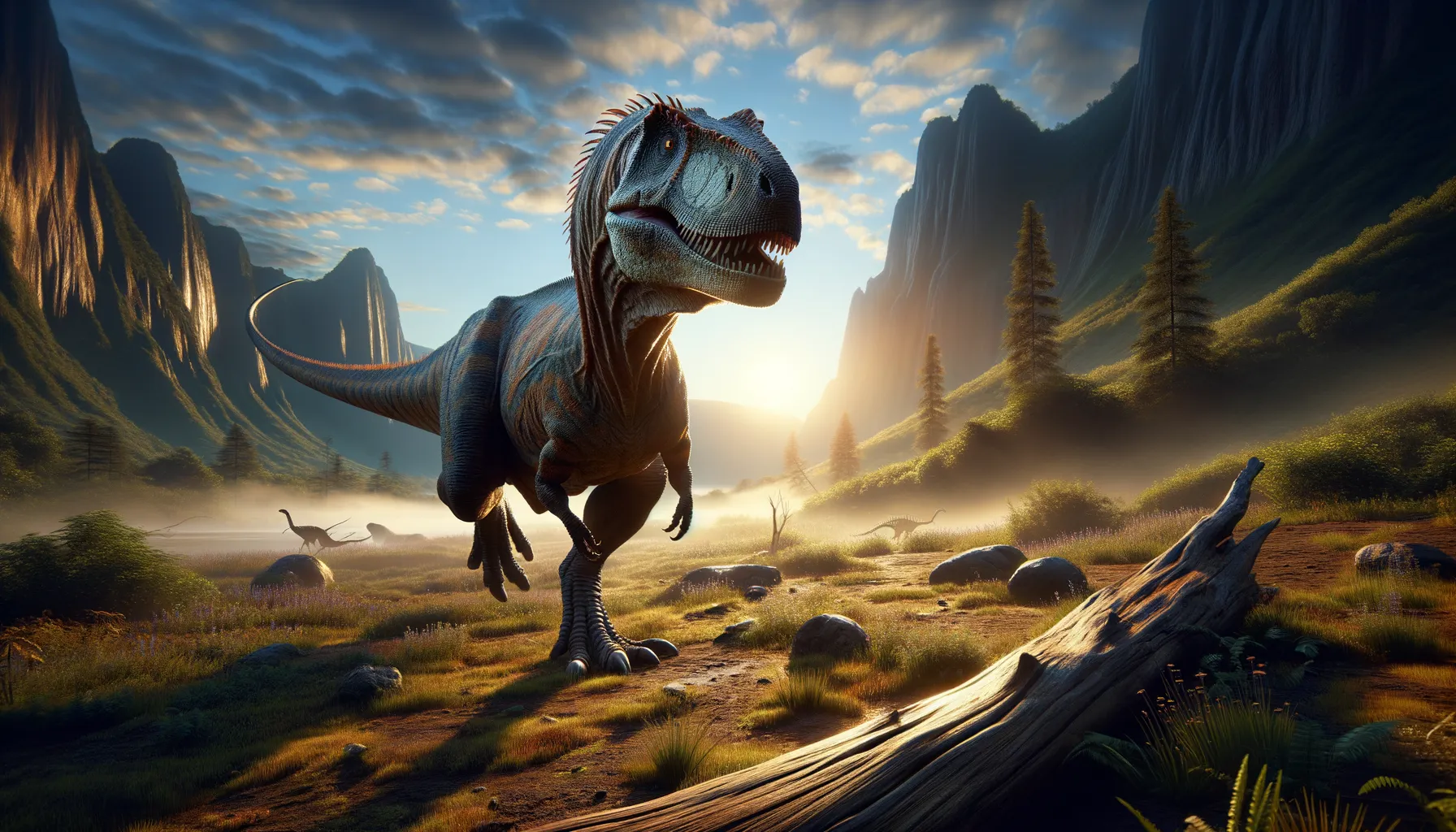
Majungatholus
Unrivaled predator of Madagascar's past.
Period
Cretaceous
Length
Measured approximately 6 to 7 meters long.
Height
Stood about 2.5 meters tall at the hips.
Weight
Weighed between 1,100 to 1,500 kilograms.
Majungatholus is a medium-sized theropod dinosaur known for its stocky build and short snout, which lived during the Late Cretaceous period. Predominantly found in Madagascar, it was a top predator in its ecosystem, playing a crucial role in maintaining the balance of the prehistoric food chain. Its fossil discovery has provided valuable insights into theropod evolution in isolated landmasses, showcasing unique adaptations distinct from other continents.
Diet
Majungatholus was a carnivore, primarily preying on other large dinosaurs within its territory. Its robust teeth and sturdy jaw mechanics suggest it could handle tough, fibrous flesh, indicating a diet rich in meat.
Hunting
As an apex predator, Majungatholus likely depended on stealth and surprise to catch its prey. Its short and muscular limbs suggest it was not built for speed but rather for a powerful grip and effective kill strategy.
Environmental challenges
Living in Madagascar during the Late Cretaceous, Majungatholus faced fluctuating climatic conditions that impacted its food sources. Episodes of drought or habitat fragmentation likely required adaptive strategies to optimize hunting and foraging. The insular environment also posed genetic challenges, influencing its physical and behavioral traits to ensure survival.
Speed
Slow-mover, suited for ambushing prey.
Lifespan
Estimated to be around 25 to 30 years.
First discovery
Found in Madagascar in the late 19th century.
Fun Facts
- Majungatholus was a meat-eating dinosaur that lived around 70 million years ago in what is now Madagascar.
- Unlike many other theropods, Majungatholus had a bulky body and a short, bulldog-like face.
- It was once thought to be a pachycephalosaur, but later studies showed it was actually a kind of abelisaurid, a group of predatory dinosaurs.
- Majungatholus might have been a solitary hunter, as suggested by its robust and stocky build.
- Evidence suggests Majungatholus practiced cannibalism, eating members of its own species during times of food scarcity.
- The Majungatholus had horns and bumps on its head, adding to its intimidating appearance.
- Despite its fearsome nature, Majungatholus was only about 20 feet long, smaller than many of its fiercest relatives.
Growth and Development
Majungatholus displayed rapid growth in juvenile stages, reaching maturity swiftly to reduce vulnerability against other predators. Ontogenetic studies indicate changes in skull morphology as they aged, adapting their hunting capacities. Growth rings in bones suggest they experienced periods of fast and slow growth in response to environmental conditions.
Habitat
Majungatholus inhabited the tropical floodplains and forests of Madagascar, environments rich with diverse flora and fauna. Its territory likely included a range of biomes from coastal areas to inland riverbanks, offering abundant food and nesting spots. Seasonal variations shaped these landscapes, influencing its mobility and habitat preferences.
Interaction with other species
As a dominant predator, Majungatholus had few natural enemies besides conspecific competition. Its interactions with herbivorous dinosaurs likely shaped their evolutionary adaptations, promoting behavioral changes to avoid predation. Fossil evidence also indicates occasional cannibalistic behavior, possibly due to territorial disputes or food scarcity.
Natural lifespan
Majungatholus had a natural lifespan of around three decades.
Reproduction
Majungatholus reproduced through egg-laying, typical of theropods, with clutch sites probably located in secluded, safe environments. Fossilized nests suggest parental investment, where adults safeguarded eggs from predators. The exact mating habits remain speculative, but display features like cranial ornaments might have played a role in sexual selection.
Social behaviour
Evidence suggests Majungatholus may have been solitary hunters but could have engaged in temporary social structures during breeding seasons. Cannibalism among individuals indicates complex social interactions, potentially involving dominance hierarchies or competition for resources. Vocalizations and visual cues may have facilitated communication in dense forest habitats.
Fossil locations
Majungatholus fossils are predominantly located in northwestern Madagascar, specifically in the Mahajanga Province. These discoveries provide insights into Cretaceous faunal links between Madagascar and other landmasses. Additional remains also aid in understanding the diverse theropod fauna unique to Gondwana. Fossil sites have rendered nearly complete skeletons, critical for reconstructing its ecology.
